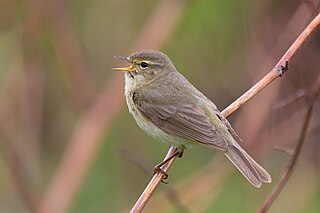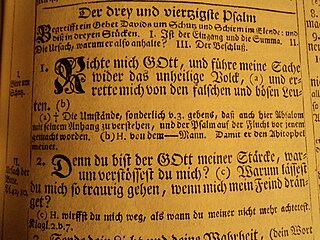Related Research Articles

The American goldfinch is a small North American bird in the finch family. It is migratory, ranging from mid-Alberta to North Carolina during the breeding season, and from just south of the Canada–United States border to Mexico during the winter.

The common chiffchaff, or simply the chiffchaff, is a common and widespread leaf warbler which breeds in open woodlands throughout northern and temperate Europe and the Palearctic.

The grey crow, formerly known as the bare-faced crow, is about the same size as the Eurasian carrion crow but has somewhat different proportions and quite atypical feather pigmentation during the juvenile phase for a member of this genus.

The common myna or Indian myna, sometimes spelled mynah, is a member of the family Sturnidae native to Asia. An omnivorous open woodland bird with a strong territorial instinct, the common myna has adapted extremely well to urban environments.

Nyctanthes arbor-tristis, the night-flowering jasmine or parijat or hengra bubar or shiuli is a species of Nyctanthes native to South Asia and Southeast Asia.

Anasa tristis is a species of bug in the family Coreidae. It is a major pest of squash and pumpkins, found throughout North America, and is a vector of the cucurbit yellow vine disease bacterium. These bugs can emit an unpleasant odor when disturbed. It is commonly known as the squash bug but shares this name with certain other species.
The great bent-winged bat is a species of vesper bat in the family Miniopteridae. It can be found in the following countries: Indonesia, Papua New Guinea, Philippines, Solomon Islands, and Vanuatu.

The buff-rumped woodpecker is a species of bird in the family Picidae. It is found in southern Myanmar, Thailand, Malaya, Java, Sumatra and Borneo. Its natural habitats are subtropical or tropical dry forests and subtropical or tropical moist lowland forests.
Wilhelm Stepper-Tristis was an Austro-Hungarian, Hungarian and Romanian novelist, journalist, and literary critic. He wrote his works in German, Hungarian and French. A communist militant during his youth, he actively supported the Hungarian Soviet Republic, and, during the interwar period, was a prominent figure in the cultural life of Timișoara city. His first novel, Brom-Delirium, was a critically acclaimed portrayal of Bohemian lifestyles.

Eugeissona is a clustering genus of flowering plant in the palm family native to Borneo, Thailand and Malaysia. The six monoecious species provide a wide range of local uses and are commonly called bertam or wild Bornean sago. The genus is the sole representative of the Eugeissoninae having very few obvious relatives; the hermaphrodite and staminate flowers are also found in Metroxylon, however the other specialized characteristics are unique suggesting an early split and differentiation from other members of the Calameae. Fossilized pollen belonging to these plants has been recovered in the lower and middle Miocene deposits in Sarawak. The name is from two Greek words meaning "good" and "roof", due to their common use in roof thatching.

The black-headed monitor or black-tailed monitor is a relatively small species of monitor lizards native to Australia. It is occasionally also called the mournful monitor, freckled monitor or the racehorse monitor, a name it shares with the Gould's monitor due to their exceptional speed. It is placed in the subgenus Odatria.

Psalm 43 is the 43rd psalm of the Book of Psalms, known in the English King James Version as "Judge me, O God, and plead my cause against an ungodly nation". In the Greek Septuagint version of the Bible and in the Latin Vulgate, this psalm is Psalm 42 in a slightly different numbering system. In Latin, it is known as "Iudica me Deus". It is commonly attributed to the sons of Korah.

Pterolophia is a genus of longhorn beetles of the subfamily Lamiinae, containing the following species:

Tristis est anima mea is a sacred motet for five voices attributed to Johann Kuhnau, Thomaskantor in Leipzig. The text is the second responsory at Tenebrae for Maundy Thursday, one of the Latin texts kept in the liturgy after the town converted to Lutheranism.

Herophila tristis is a species of beetle in the family Cerambycidae, they are also called longhorned beetles. It was described by Carl Linnaeus in 1767, originally under the genus Cerambyx. It is known from Italy, Romania, Austria, Bulgaria, Crete, Croatia, Sardinia, France, Greece, Serbia, Corsica, Sicily, Hungary, Slovenia, Albania, and Turkey. It feeds on Morus alba, Ficus carica, and Robinia pseudoacacia. They live 2-3 years and are 13 - 26 mm long. Larvae feed under the bark of a range of broad-leaved trees, mostly Ficus carica commonly known as fig trees. As an adult they hide in the day and come out in the dusk.
Pterolophia ingrata is a species of beetle in the family Cerambycidae. It was described by Francis Polkinghorne Pascoe in 1864.

Pterolophia melanura is a species of beetle in the family Cerambycidae. It was described by Francis Polkinghorne Pascoe in 1857. It has a wide distribution in Asia.
Pterolophia instabilis is a species of beetle in the family Cerambycidae. It was described by Per Olof Christopher Aurivillius in 1922. It is known from Seychelles.
Pterolophia guineensis is a species of beetle in the family Cerambycidae. It was described by James Thomson in 1864, originally under the genus Alyattes.
References
- ↑ BioLib.cz - Pterolophia tristis. Retrieved on 8 September 2014.